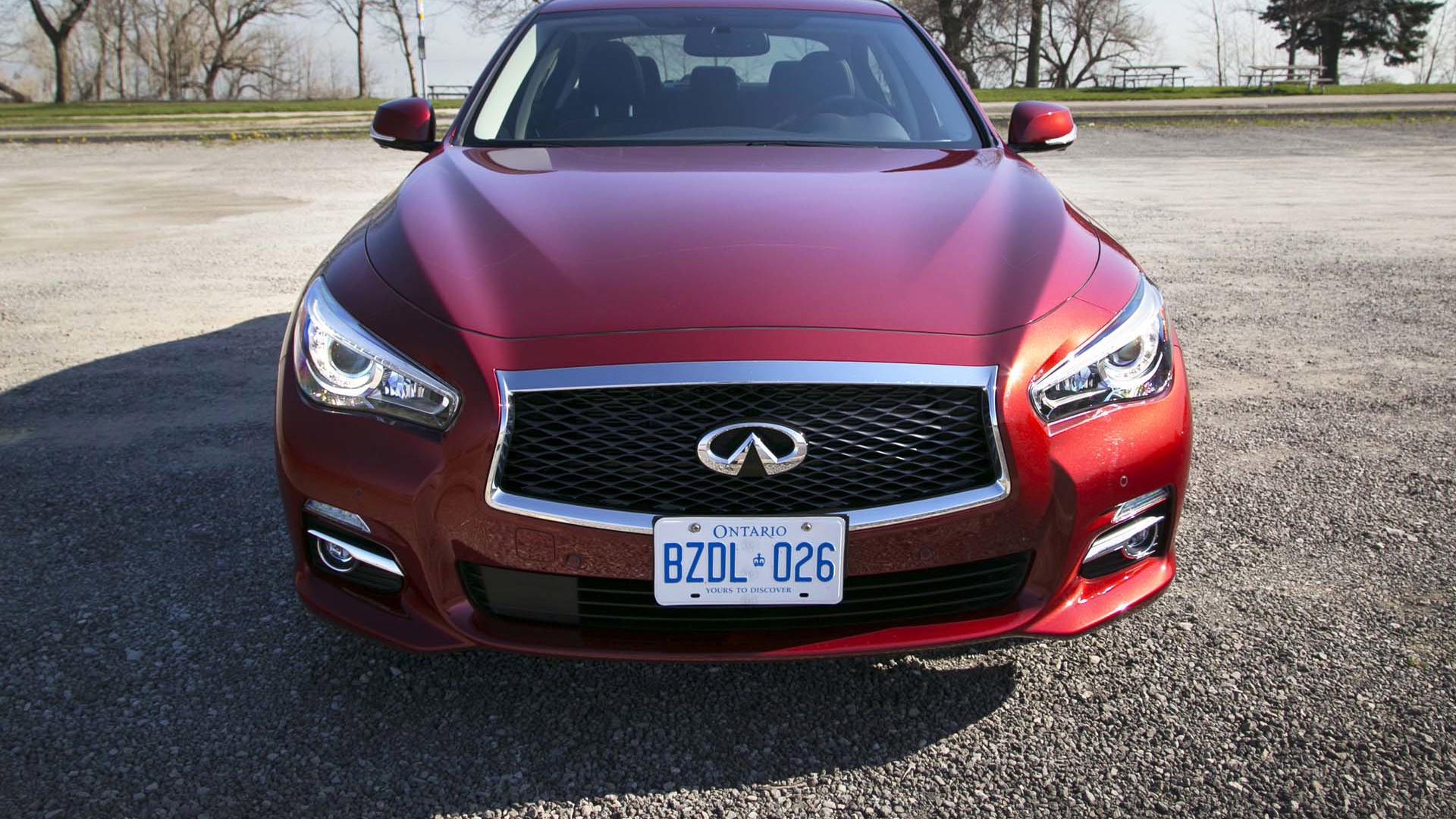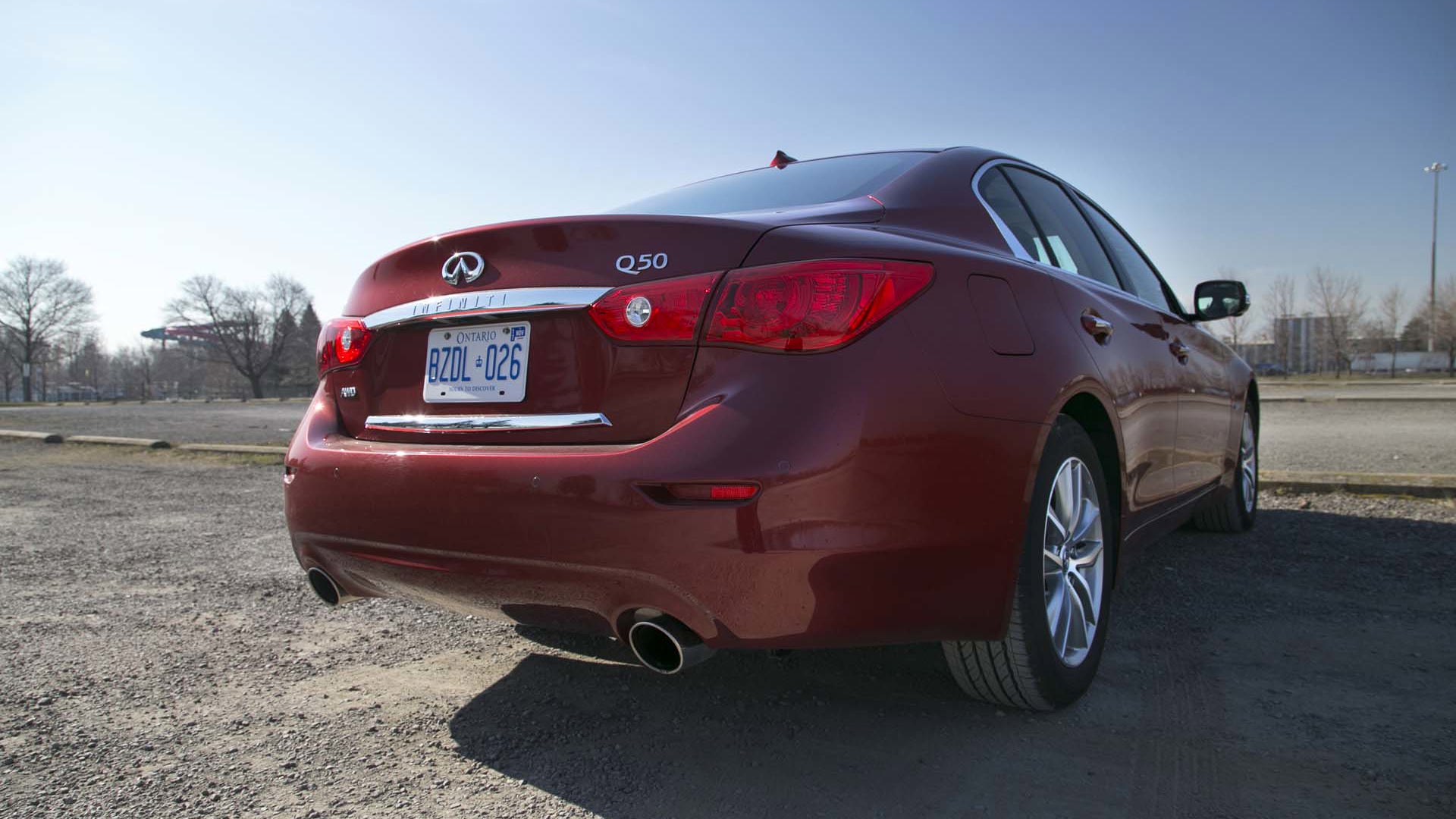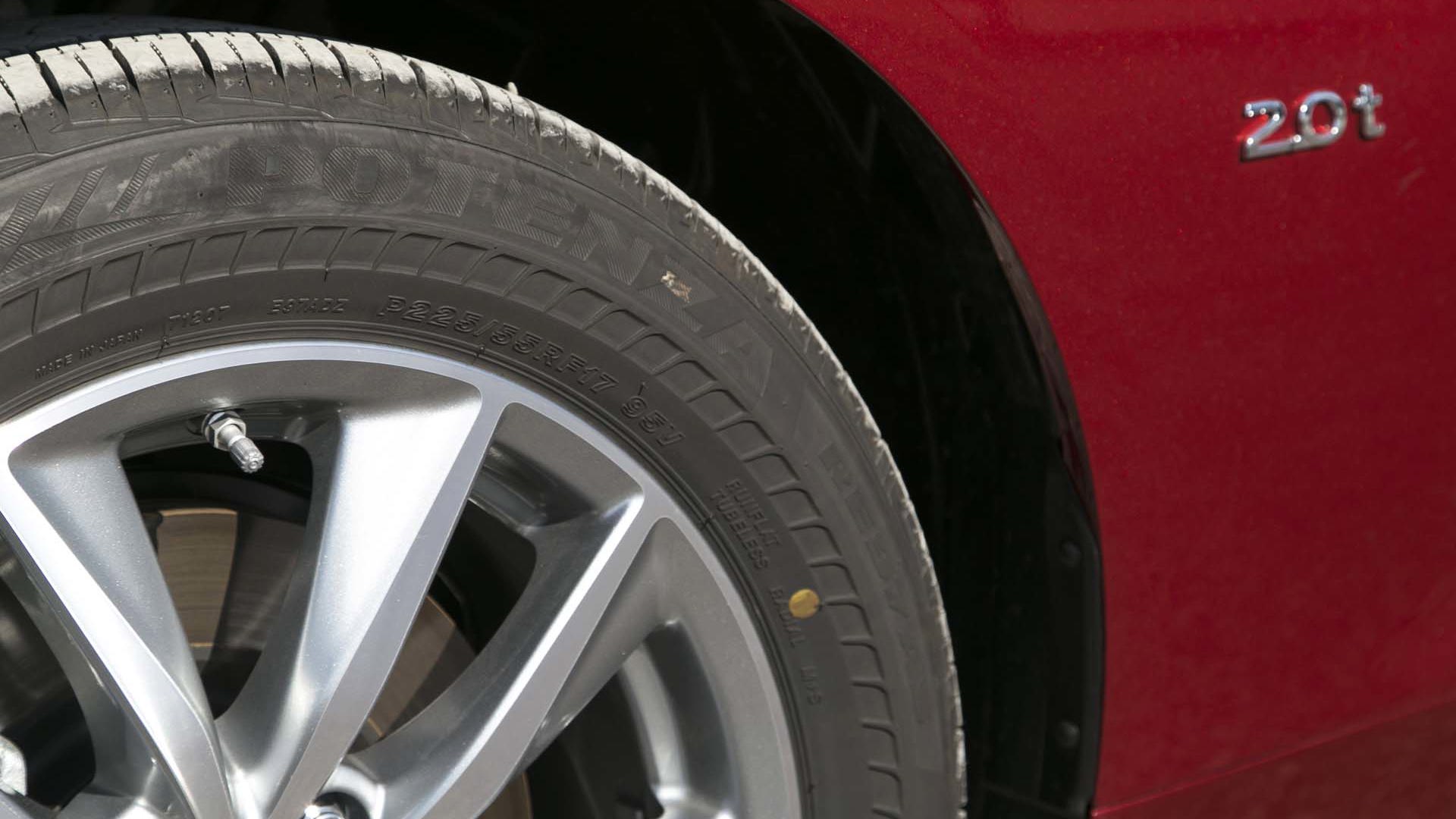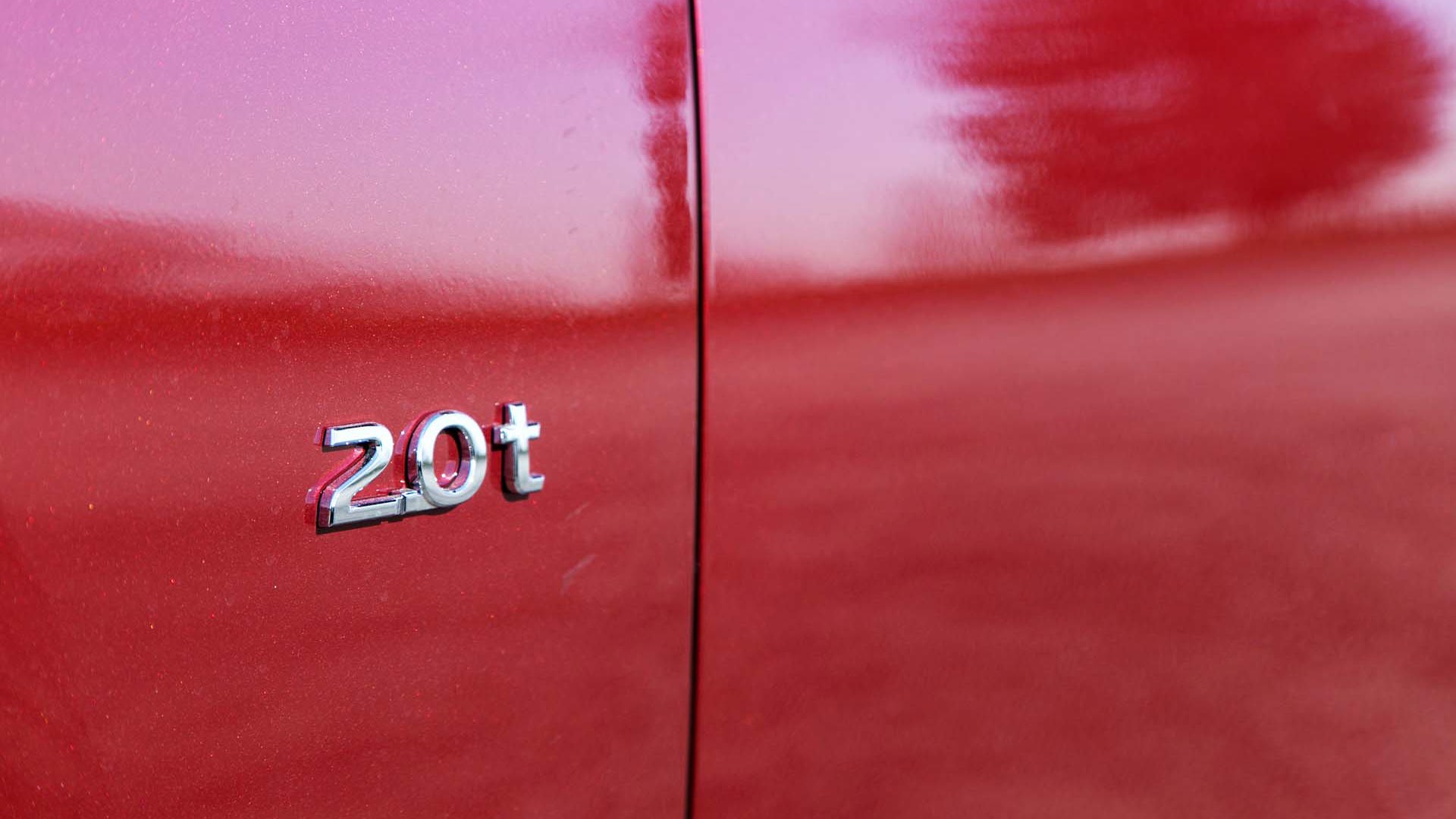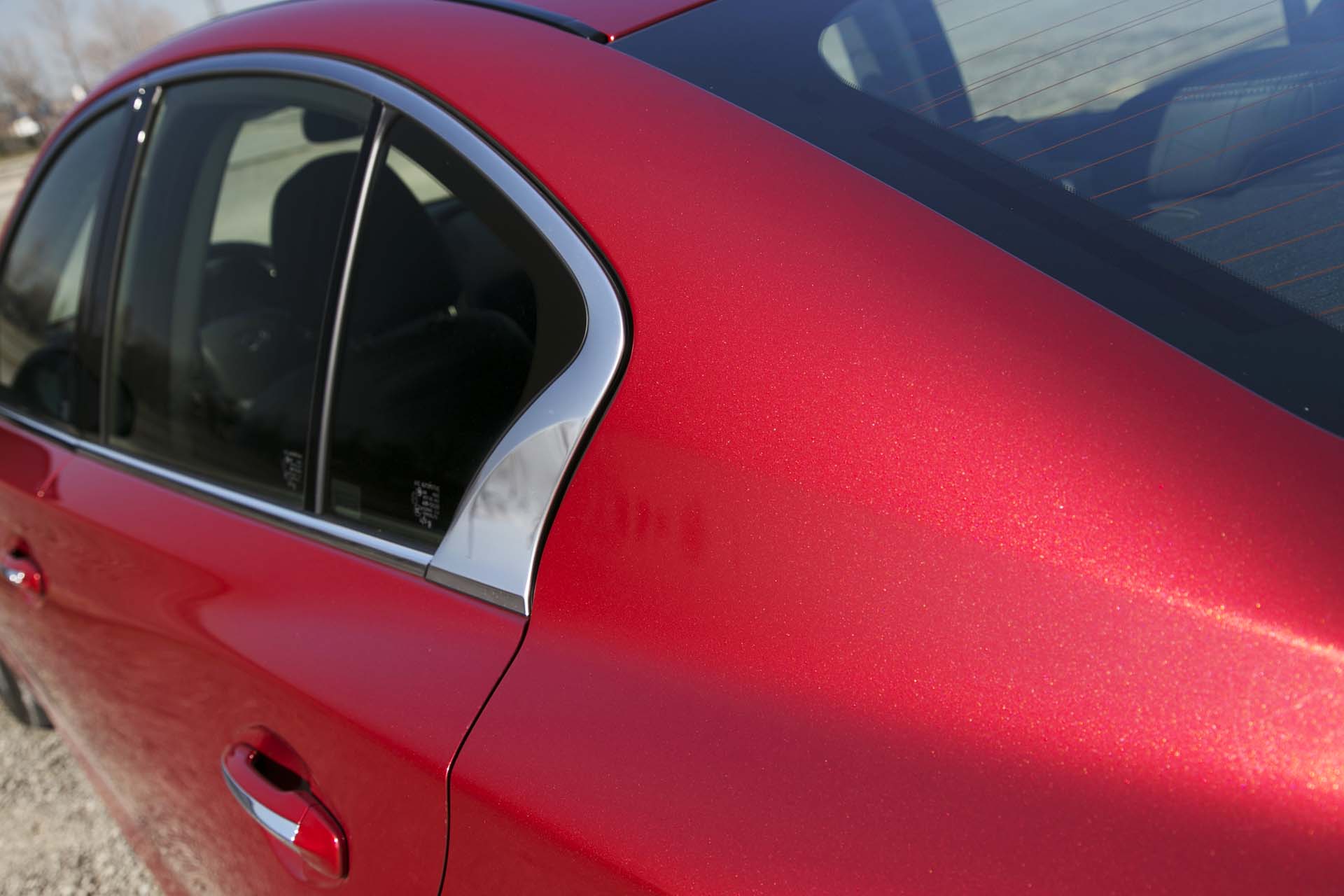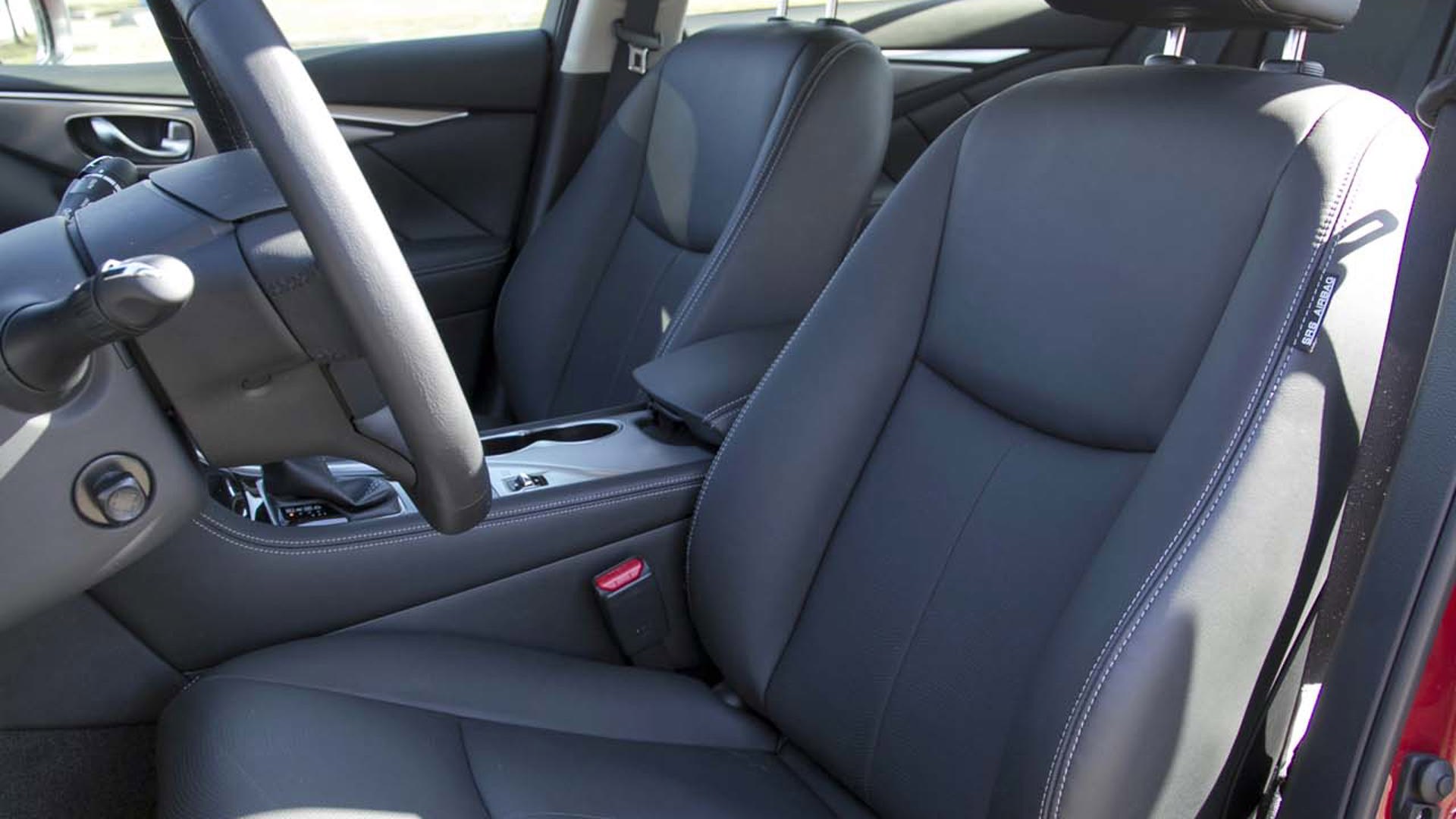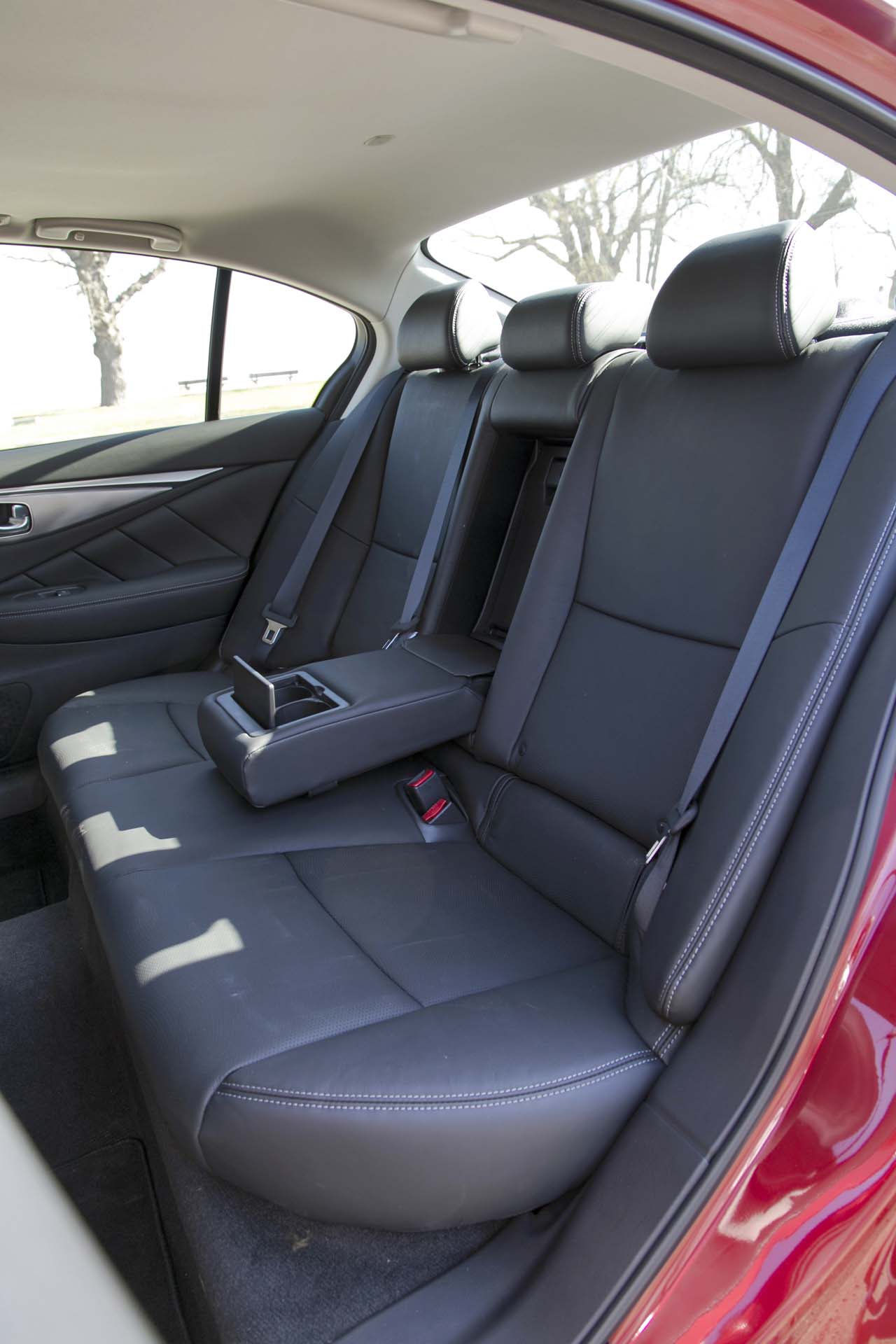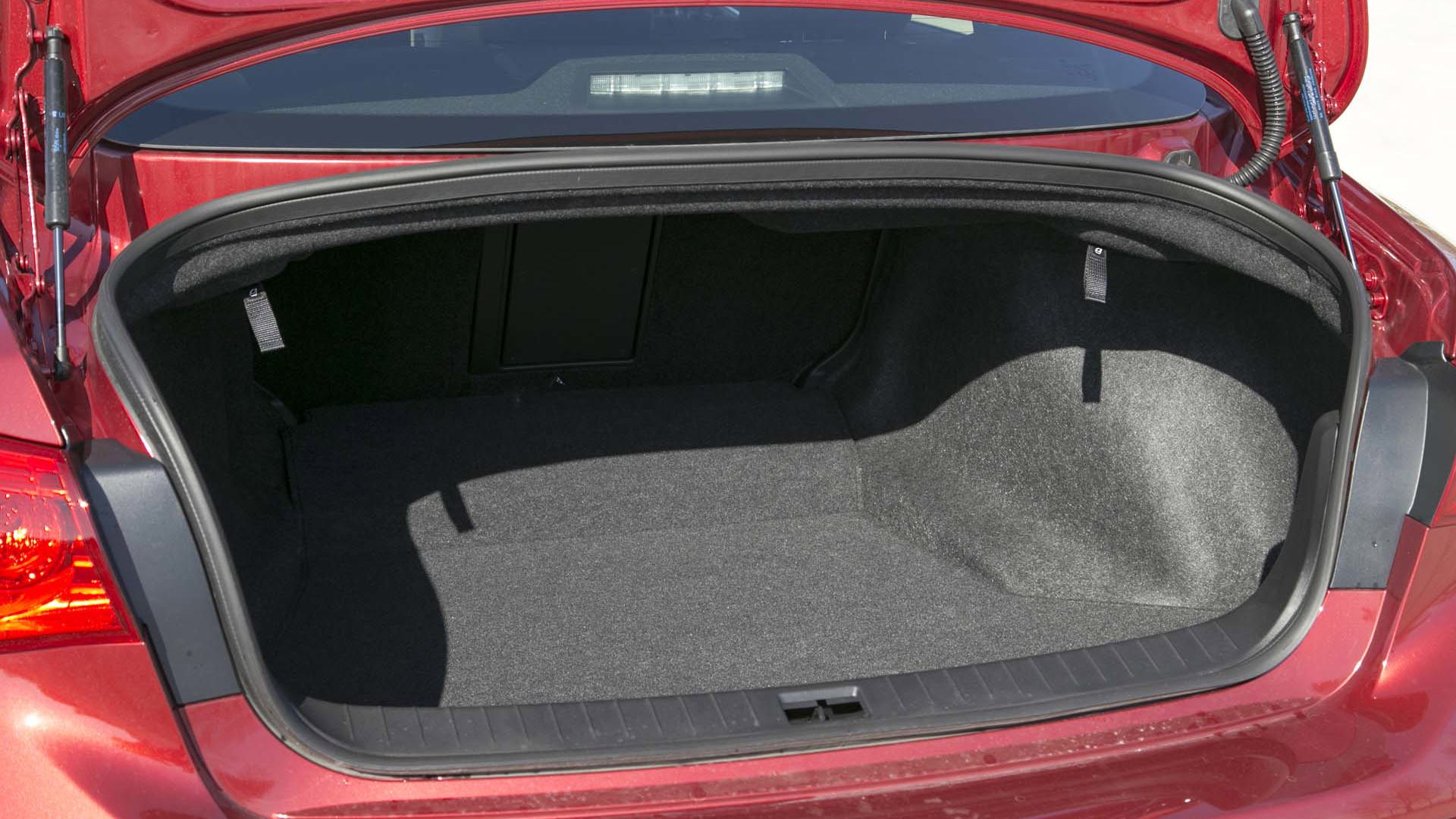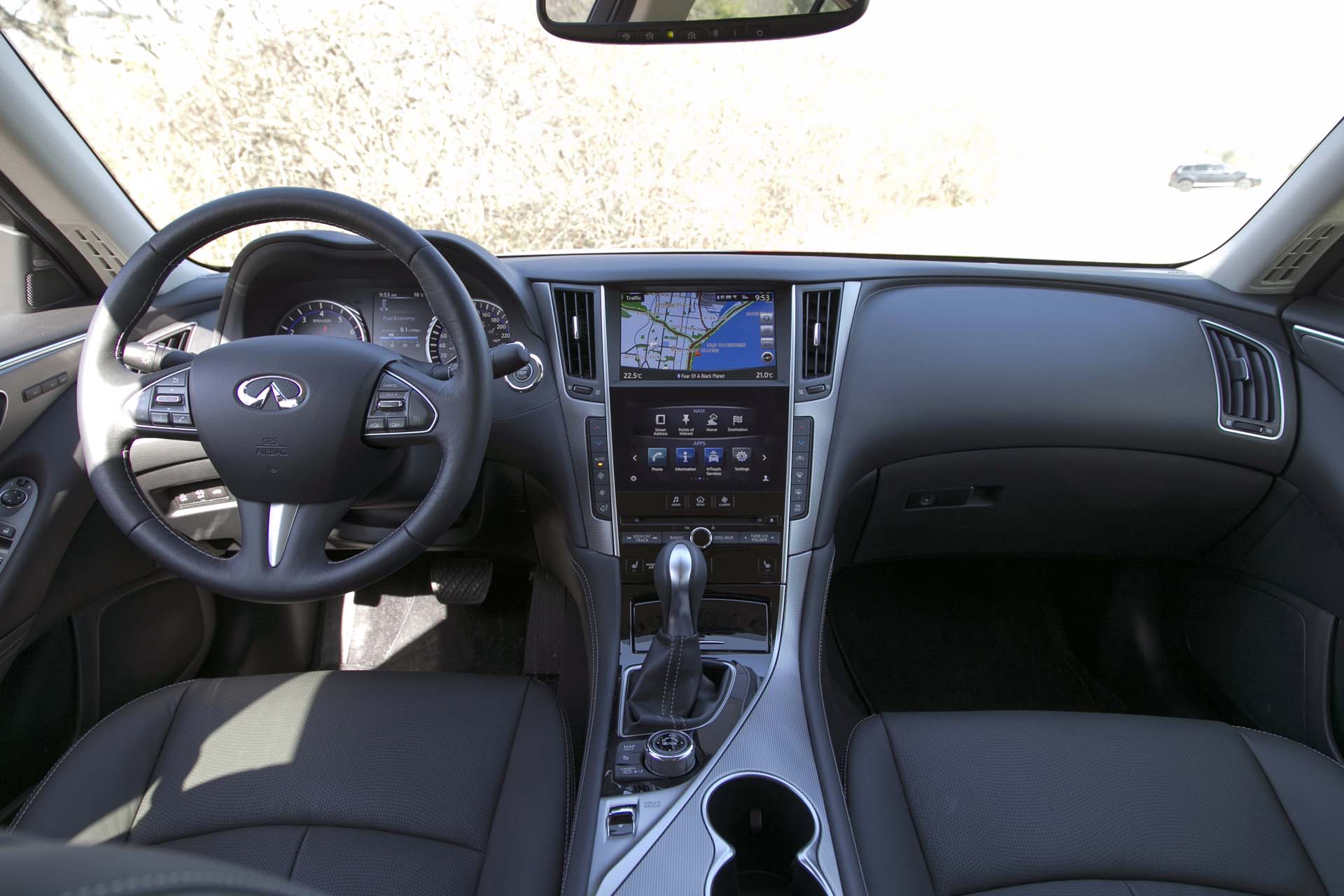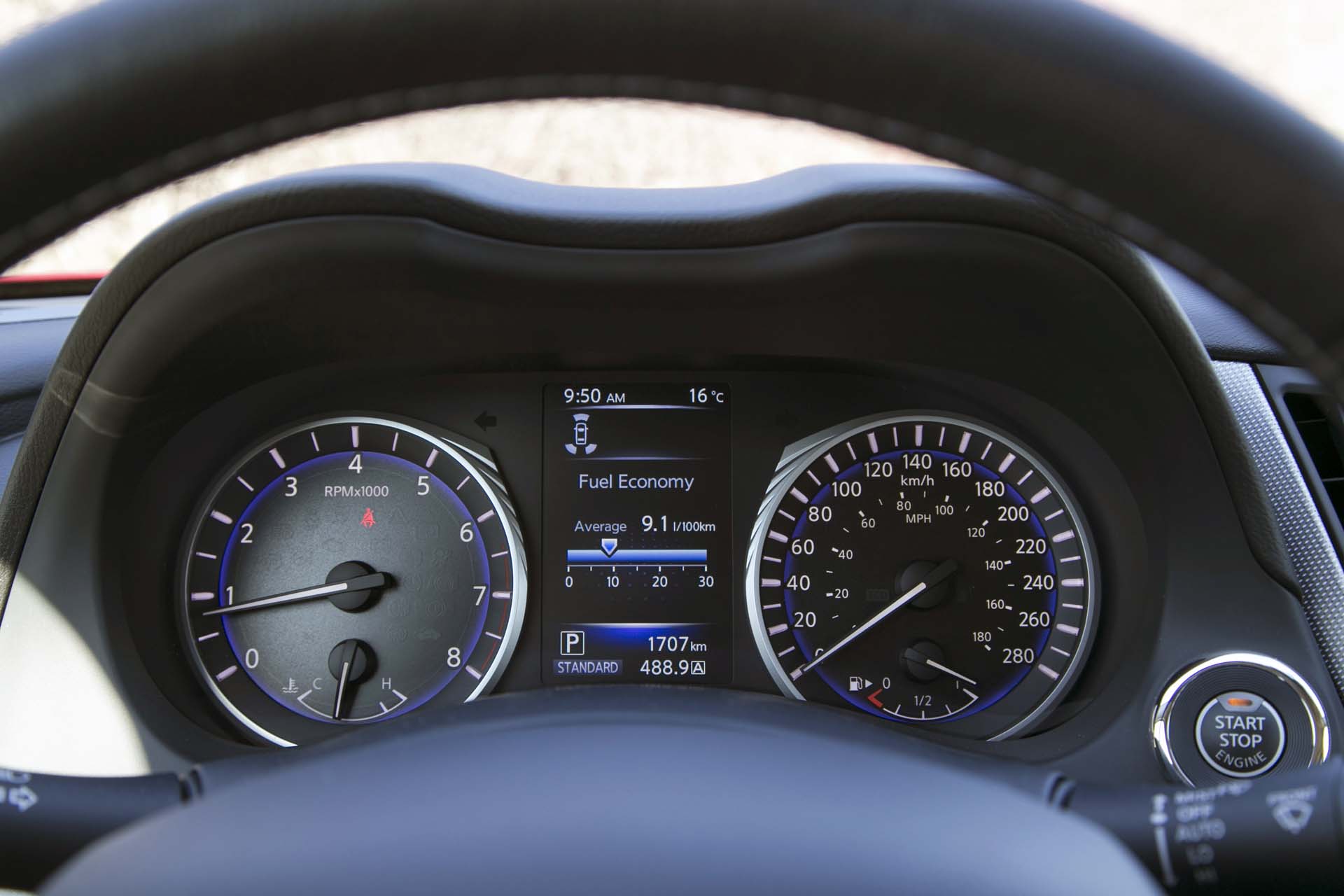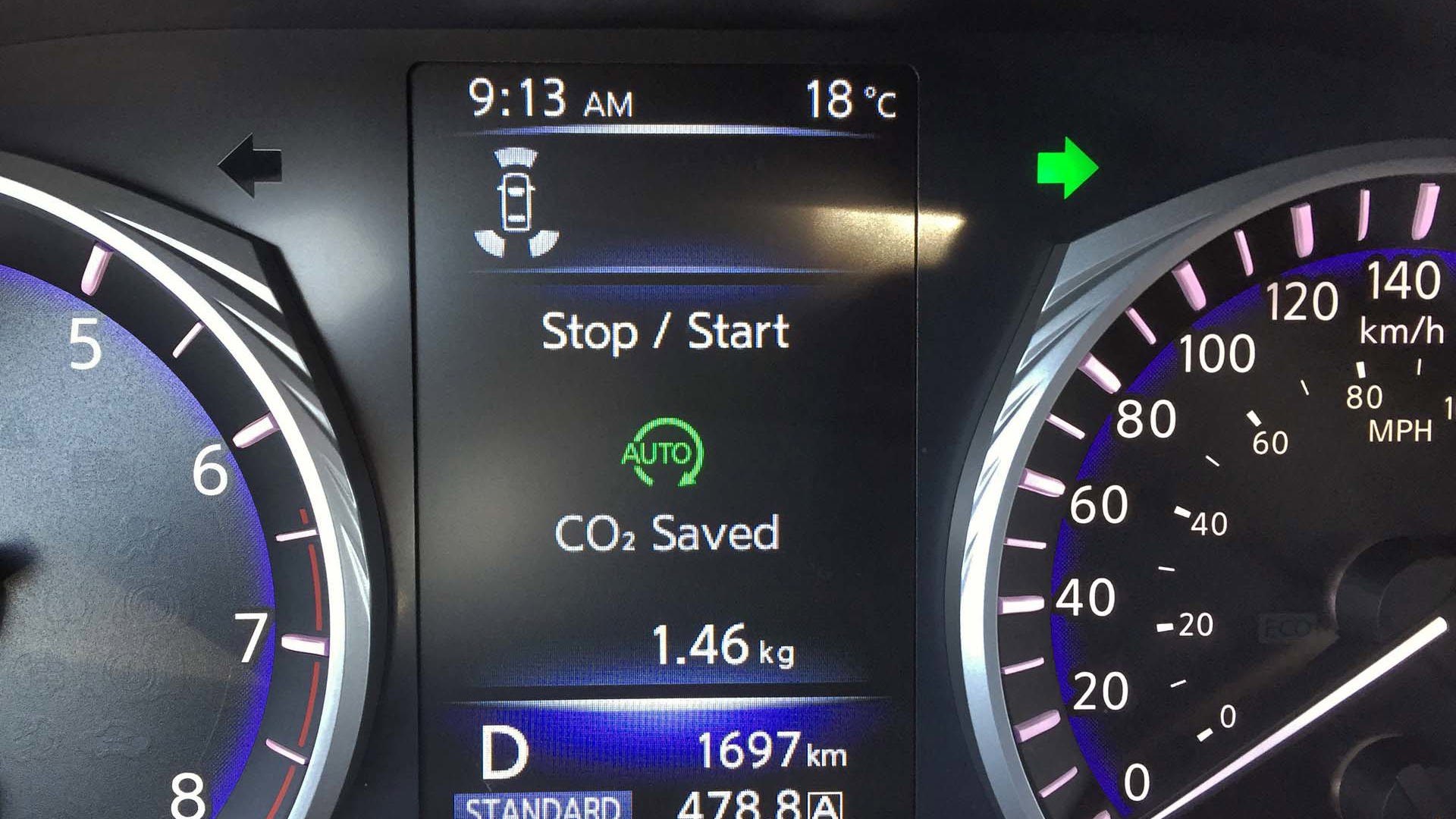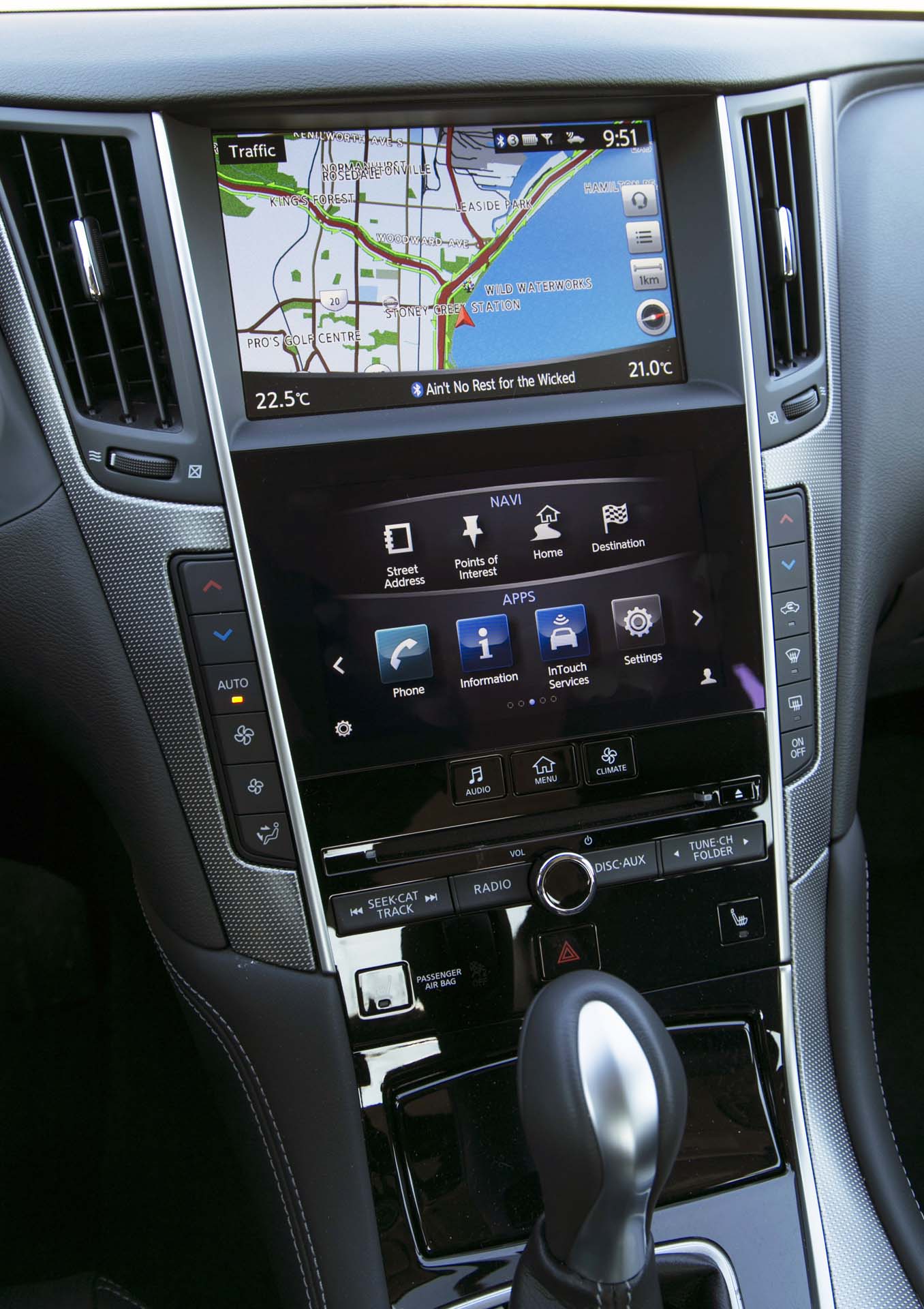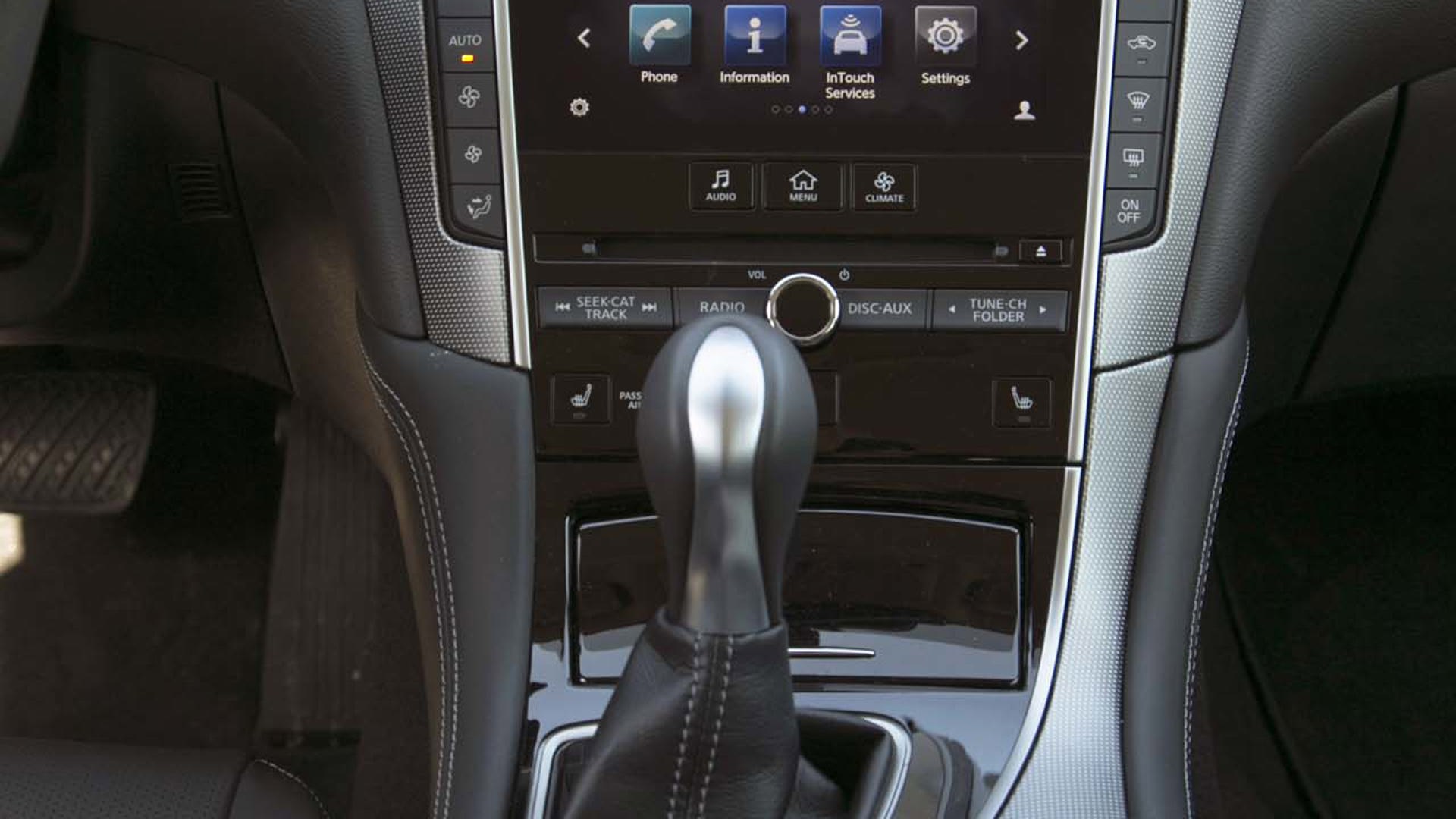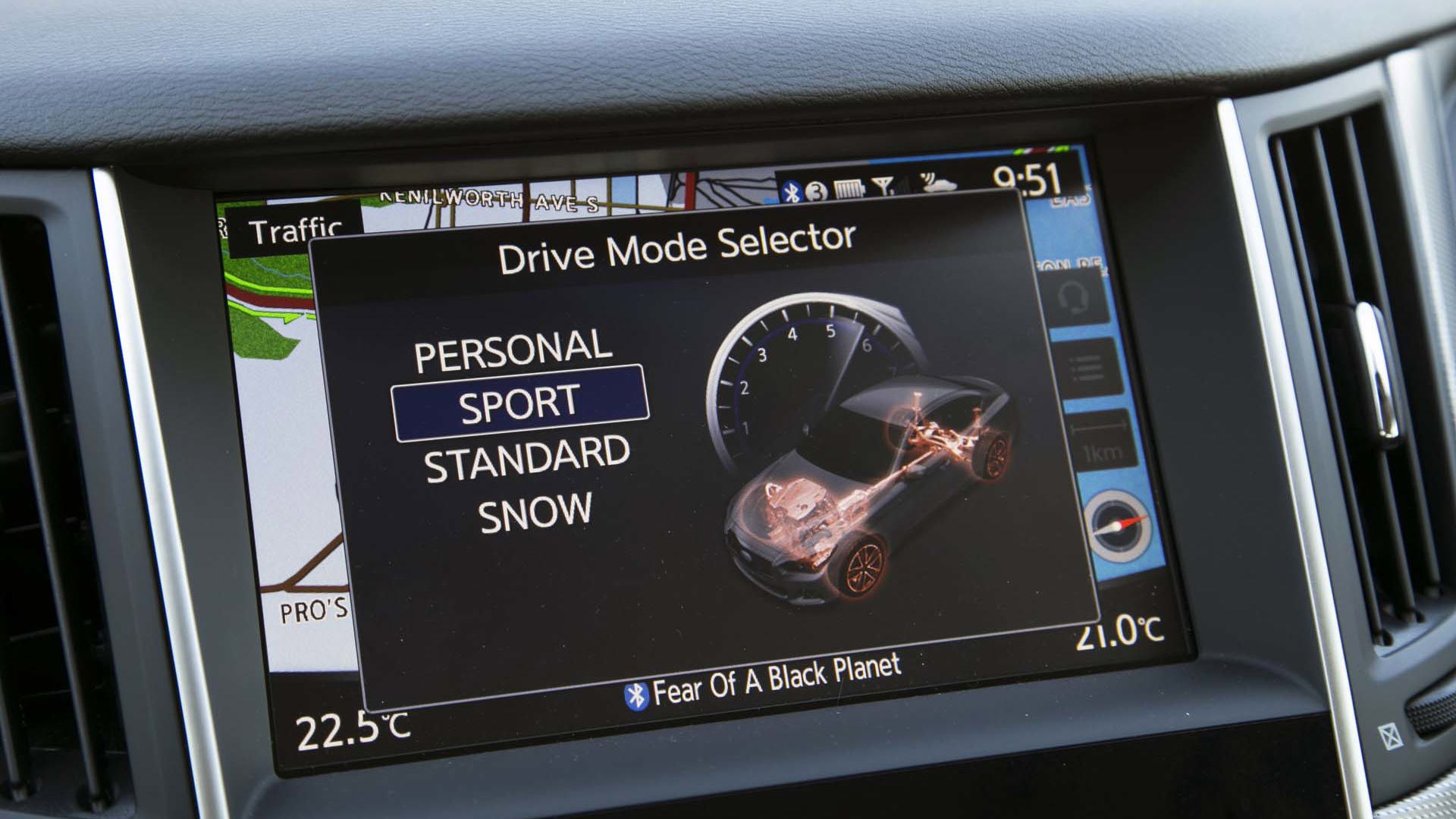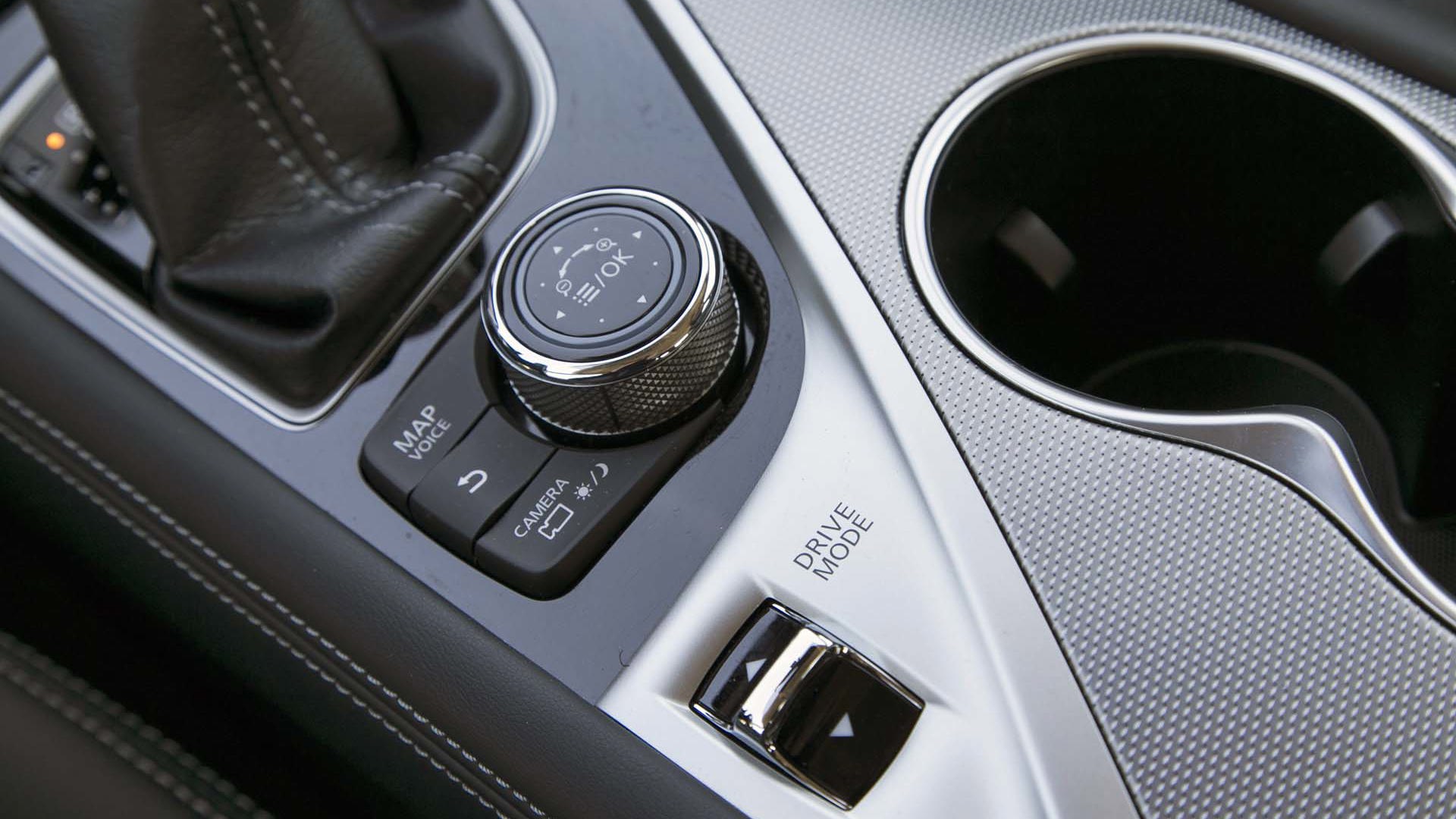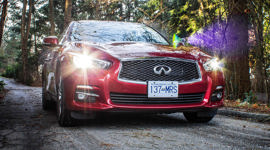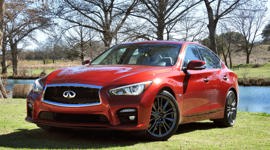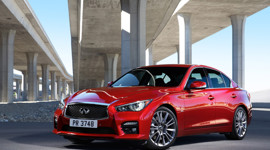 AutoTrader SCORE
AutoTrader SCORE
-
EXTERIOR STYLING8/10
-
INTERIOR8/10
-
PERFORMANCE7/10
-
COMFORT8/10
-
FUEL ECONOMY7/10
Peer pressure is a funny thing. We’re told as kids not to succumb to it, that just because little Billy or Sally does something, it doesn’t mean we need to do it too. This parental wisdom of course stems from the desire to keep children from being encouraged to make foolish choices that will surely result in hardship.
Despite tipping the scales around 100 kg heavier than its competitors, the Infiniti’s little four-banger provides adequate oomph that should satisfy most buyers.
Peer pressure has its benefits too, and nowhere is this more evident than in the auto industry. If one competitor gets an edge over another in terms of sales or any marketable benefit, every other competitor scrambles to follow suit, and usually the consumers stand to benefit.
Infiniti has seemingly succumbed to the peer pressures of its competitors in the entry-level, compact luxury sedan segment – a group of cars renowned for their impressive blend of style and cachet, performance and comfort. Ze Germans, in particular, have done an outstanding job of stretching the segment across a vast price (and performance) spectrum. Cadillac quickly followed suit, offering a multitude of engine choices for its competent ATS sedan, and even Lexus has fitted their IS compact sedan with a trio of power plants (expanded to a four-engine offering this year).
Infiniti’s Q50, meanwhile, has tried to compete with them all using a single (albeit very good) 3.7 L naturally aspirated V6 engine. That is, until now, thanks to the benefit of turbocharging. Infiniti’s compact luxury sedan is enjoying a renaissance of sorts this year – a mid-life crisis, if you will – with a greater spread from entry-level turbocharged four-cylinder (just like everyone else), to a rip-roarin’ twin-turbo V6 that’ll get the adrenaline glands working hard.
Our subject here is the starting point of the Q50 line up with its 2.0 L turbocharged four-cylinder engine developing a modest 208 horsepower. Besides BMW’s meagre 320i, the Infiniti’s power is lowest in the class by a fair margin, and ties with the class-below Mercedes-Benz CLA – with which it shares this engine. Its torque at 258 lb-ft – is a measure that most motorists will feel in daily driving, and is a more competitive output.
Despite tipping the scales around 100 kg heavier than its competitors, the Infiniti’s little four-banger provides adequate oomph that should satisfy most buyers. For those needing more gusto, there are two twin-turbo V6 Q50s to choose from that are sure to do the trick.
The power is directed to all four wheels in our AWD press car through a seven-speed automatic. Shifts are swift if not rifle-bolt crisp, and there are no steering-wheel-mounted paddles to engage the driver further in the shifting activities. Braking is composed, smoothly modulated, and adequate for arresting speed in a hurry.
Twin-turbo, anyone? 2016 Infiniti Q50 Red Sport 400, 10 Things You Should Know
Infiniti introduced a fully electric steering system with the Q50 when the model first came out. The upside is that depending on the driver’s mood, the feel and steering rate can be digitally adjusted. The downside is that the Q50 has always suffered from artificial-feeling steering and, coupled with tall sidewall tires (225/55/17) there’s a distinct lack of the sharpness and mechanical precision found in some of the best competitors’ cars.
With a solid suspension set-up (double wishbone up front and multi-link rear), the car keeps its wheels pretty well planted, and all-wheel drive helps keep power delivery distributed where it is best managed, keeping spirited driving sure-footed even if weather conditions turn sour. Those tall profile tires, while not ideal for corner carving, do provide the benefit of a soaking up bumps better than low-profile performance rubber would.
The ride is pretty decent, though like all of the cars in this segment, the focus seems to be more on a firm, handling-first ride over cushy luxury, despite this trim level not really being a sport sedan. The Q50 is among the largest cars in the segment with each length, width, height and wheelbase all measuring greater than its peers except for Acura’s TLX. This of course contributes to the Infiniti’s greater mass, but helps give it an edge in comfort too.
The pursuit of ever-improving fuel efficiency has driven the compact luxury car segment to fit four-cylinder engines to the entry-level models. Modern turbocharging results in impressive low-end torque delivery that helps keep the Q50 feeling reasonably lively around town. Our Q50 2.0T AWD’s fuel consumption is rated at 10.6 L/100 km city and 8.4 L/100 km highway. The Q50 is also fitted with an auto start/stop function for stop-and-go traffic, though it proved to only work occasionally and very abruptly when re-starting.
With primarily highway and open, country road driving, we saw an average of 9.1 L/100 km; not bad, but not as impressive as we’d like to see in a car with such a small engine. However, in fairness, the car was left in its more aggressive “Sport” mode more times than not, resulting in more aggressive throttle calibration and gear changes that happen at higher revs.
The greater dimensions on the outside result in a comfortable and reasonably spacious interior. The backseat provides good space for two adults, though a third squeezed between will lament the driveshaft tunnel causing his or her legs to be splayed.
Front seat occupants are likely to be happier. The seats – while not suitably bolstered for sporting duties – are quite comfortable, even after an hour or two behind the wheel. They’re finished in soft leather and are heated, but not cooled at this trim level. Interior finishes and design are both top shelf throughout.
The dashboard houses a pair of handsome and highly legible primary gauges for the speedometer and tach, with a crisp information screen nested between them. The central dash is dominated by two touch screens to operate all manner of vehicular operations. Despite this, Infiniti’s designers still opted to provide actual buttons for climate controls and a traditional knob for audio volume, and even a redundant controller for infotainment system operation. This is one area where Infiniti should be commended for their common sense and not following some of their peers in developing a cockpit with only digital “buttons” to control everything.
The infotainment system itself is intuitive and required very little familiarization time to pair the phone, program favourite stations and make fine adjustments to the audio. The Bose-tuned system sounds pretty decent too.
Although not the most athletic sport sedan in the class, nor the most luxurious, the entry-level Q50 is a solid offering amongst its peers. Considering styling that still looks fresh and aggressive even a few years into its life cycle, Infiniti’s most affordable sedan is certainly worth considering at its starting price just under $40,000. With a few key option packages, our test car checked out at nearly $48,000 putting it right in the sweet spot with its peers, similarly equipped.
Despite mom’s protests, peer pressure isn’t all bad. The improvements to Infiniti’s overall line up are proof of this, however in its most basic trim, the Q50 2.0T still has a bit of work to do to become the most popular one in the class.
| Warranty: 4 years/100,000 km; 6 years/110,000 km powertrain; 7 years/unlimited distance corrosion perforation; 4 years/100,000 km roadside assistance Competitors: |
| Model Tested | 2016 Infiniti Q50 2.0T AWD |
|---|---|
| Base Price | $39,900 |
| A/C Tax | $100 |
| Destination Fee | $1,995 |
| Price as Tested | $48,280 |
|
Optional Equipment
Premium Package, $4,000; Driver Assistance Package, $2,000
|
|
